ESTES PARK, Colo. — Wildfires are interwoven in the 109-year history of Rocky Mountain National Park (RMNP), but the fires of recent years have touched the park in different ways.
Colorado's most-visited national park is full of fire-adapted ecosystems, meaning blazes are expected to occur. But within the past 109 years, the park has experienced more wildfires in the past 13 years than it has in the entire rest of its existence, said Kyle Patterson, public affairs officer with the park.
Some are caused by lightning; others are caused by people.
In general, wildfires are a healthy part of a forest's ecological process, as it essentially wipes the landscape clean and allows for new growth. This gets rid of old or sickly vegetation and densely wooded spaces, leaving behind open space and nutrient-rich soil. Wildfire is part of RMNP's management plan.

But 2020 was different from other years.
Instead of small wildfires, the Cameron Peak Fire and East Troublesome Fire together burned more than 400,000 acres — initially west of the national park before the flames reached into and beyond that boundary.
They would become the two largest wildfires in state history.
2020: A fire year unlike any other
The Cameron Peak Fire sparked outside of RMNP, on the northern side, on Aug. 13, 2020. It moved into the park on Sept. 6, 2020 and ended up burning 7,163 acres within the park, including the Cascade Creek, Hague Creek and Mummy Pass Creek drainage areas.
It would expand to 208,913 acres and become the largest wildfire in recorded state history, destroying 469 structures.
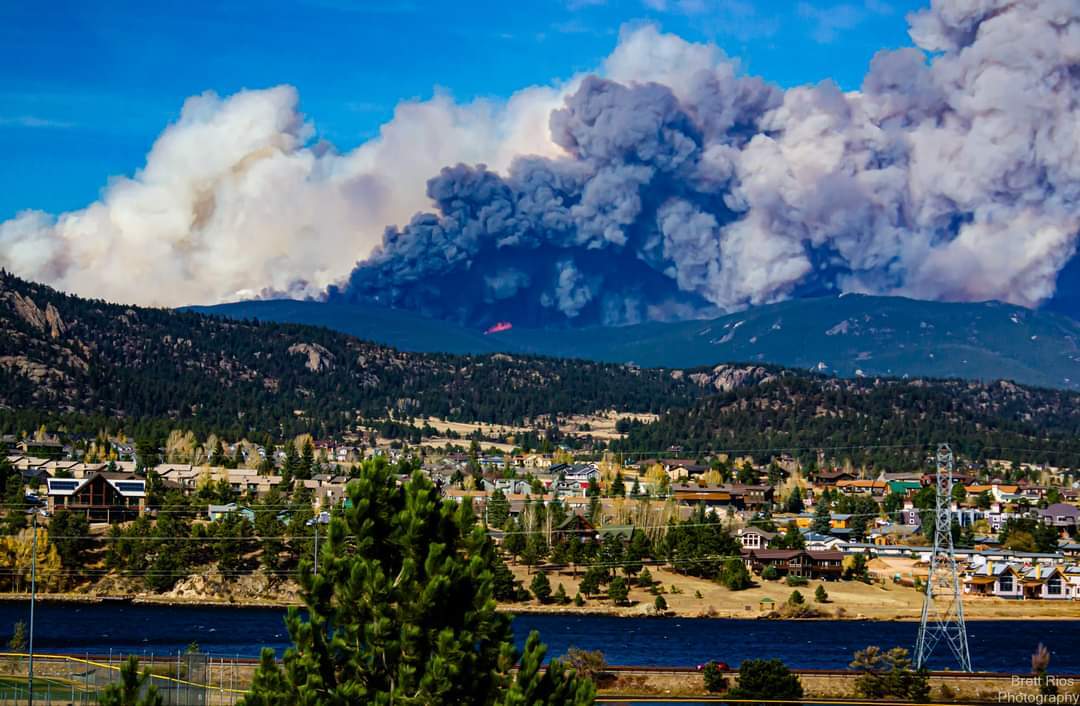
Meanwhile, the East Troublesome Fire ignited in mid-October 2020 outside the park on its western side near Granby.
On Oct. 21, 2020, pushed by wind speeds of 100 mph, the fire made a huge run of about 18 miles in one day, blowing by the park's boundaries. It continued to light spot fires 1.5 miles from the head of the Tonahutu Creek to the head of Spruce Creek on the east side of the Continental Divide, around the same areas as the 2012 Fern Lake Fire.
East Troublesome grew from 19,000 acres to 170,000 — a record for rapid-fire expansion in Colorado — in about 36 hours and forced the evacuation of more than 35,000 people, first around Grand Lake and then around Estes Park.
A Grand Lake resident, who lost her home to the blaze, told Denver7 in 2021 that it felt like "a hurricane and a tornado and a wildfire met in the woods."

"We've done a lot of fuels mitigation work here in the park and a lot of the firefighters were able to use that previous work that had been done to serve as anchors, which enabled the fire and never to leave Rocky," Patterson said.
So while the East Troublesome Fire destroyed 580 structures, including 366 residential structures, on the west side of the park, it never reached Estes Park.
"Certainly the weather helped us in having it not have more impacts quite frankly on the east side of the park as it did the west side of the park," Patterson said.

That wildfire was the largest within the park's boundaries, burning a total of 193,812 acres. Of that, more than 21,000 acres was within the park and investigators said the blaze was caused by humans, possibly by accident by a hunter or a backcountry camper.
Thanks to favorable weather, firefighters were able to stop both fires on Oct. 24 and 25, 2020. The East Troublesome Fire was officially contained on Nov. 30, 2020, and Cameron Peak Fire's full containment came on Dec. 2, 2020.
Some National Park Service structures were destroyed in East Troublesome, though many remained intact, including the Kawuneeche Visitor Center and main park housing area on the west side.

The ones that were destroyed included the park's Trails and Tack Barn and all its contents, the Grand Lake entrance station office (excluding the kiosks), the historic Onahu Lodge and Green Mountain cabins — both of which were eligible for the National Register of Historic Places — and the Harbison Meadows vault toilet facility, in addition to the four-bay garage structure at Trail River Ranch and all its historic contents, according to the NPS.
"Fortunately, everyone was evacuated, in a very quick manner," Patterson said. "And so we're very, very grateful that our staff and visitors safely were able to get out of the area."
The structures lost housed 22 seasonal employees, including park rangers, park guides, fee and campground staff, trail crew members, buildings and utilities staff and custodians, according to NPS.

On the east side of the park, the 95-year-old Fern Lake Backcountry Patrol Cabin was also destroyed. It was the oldest structure lost within the park, Patterson said.
In addition, 52 miles of trail were scorched, including about 17 bridges.
"So, both the East Troublesome Fire and the Cameron Peak Fire impacted about 30,000 acres in Rocky," Patterson said.
For park staff during 2020, concern dribbled into both personal and professional life.
"When something like this happens, when you see the two most historic fires in Colorado's history impact a place like Rocky, there's a variety of different stories that came with that," Patterson said. "Park staff were being impacted by it professionally, with their roles here, but also personally, because we were evacuating, and having to respond and react."
By the time firefighters and snowfall had quieted the Cameron Peak Fire and East Troublesome Fire, about 10% of RMNP was newly burned, many places still hot to the touch. It had been an exhausting few weeks for fire personnel and evacuated community members, but a long road ahead.
How the National Park Service is recovering from 2020 fires
As soon as it was safe to do so, RMNP staff went to work.
In the immediate aftermath of the fires, a National Park Service Burned Area Emergency Response Team was deployed in November 2020 to assess the fires' impacts.

Between the various subgroups — trail crew, wilderness crew, vegetation crew, and cultural resources staff — they identified 42 issues of concern in a scoping session, according to the NPS.
The team worked to clear overhead hazards and identified destroyed campsites that needed to be relocated. RMNP staff stabilized 30 miles of trail by replacing erosion control structures, replaced seven multi-use bridges and 35-foot logs and footbridges, cleared trails blocked by trees, and felled 68 acres of hazard trees, according to the park.
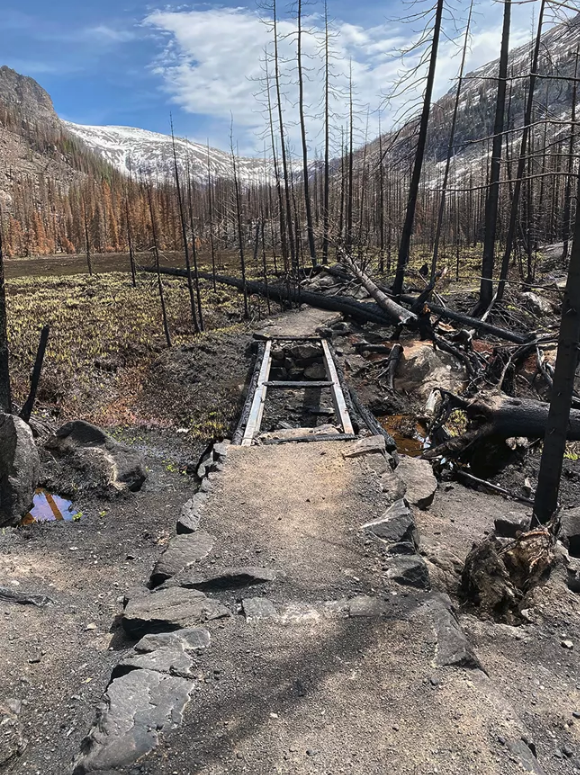
Luckily, the park — much of which was closed to the public on Oct. 22 — partially reopened on Nov. 6, 2020.
"Gradually, areas of the park did reopen relatively quickly as we went in and assessed both the resource impacts and any of the structure or cultural impacts that we saw in these areas as well," Patterson said.
The recovery efforts continued into 2021 as well, with 94 people working to repair bur area trails that summer, according to the NPS.
Patterson said park staff have been able to move forward with a plan to rebuild the destroyed seasonal housing in a different location, thanks to disaster funding. The plan is currently in the design phase, she said.
Almost all of the park's trails have reopened. Currently, part of Sun Valley Trail on the west side of the park remains closed, as well as Upper Mummy Pass Trail in the northwest area of the park.
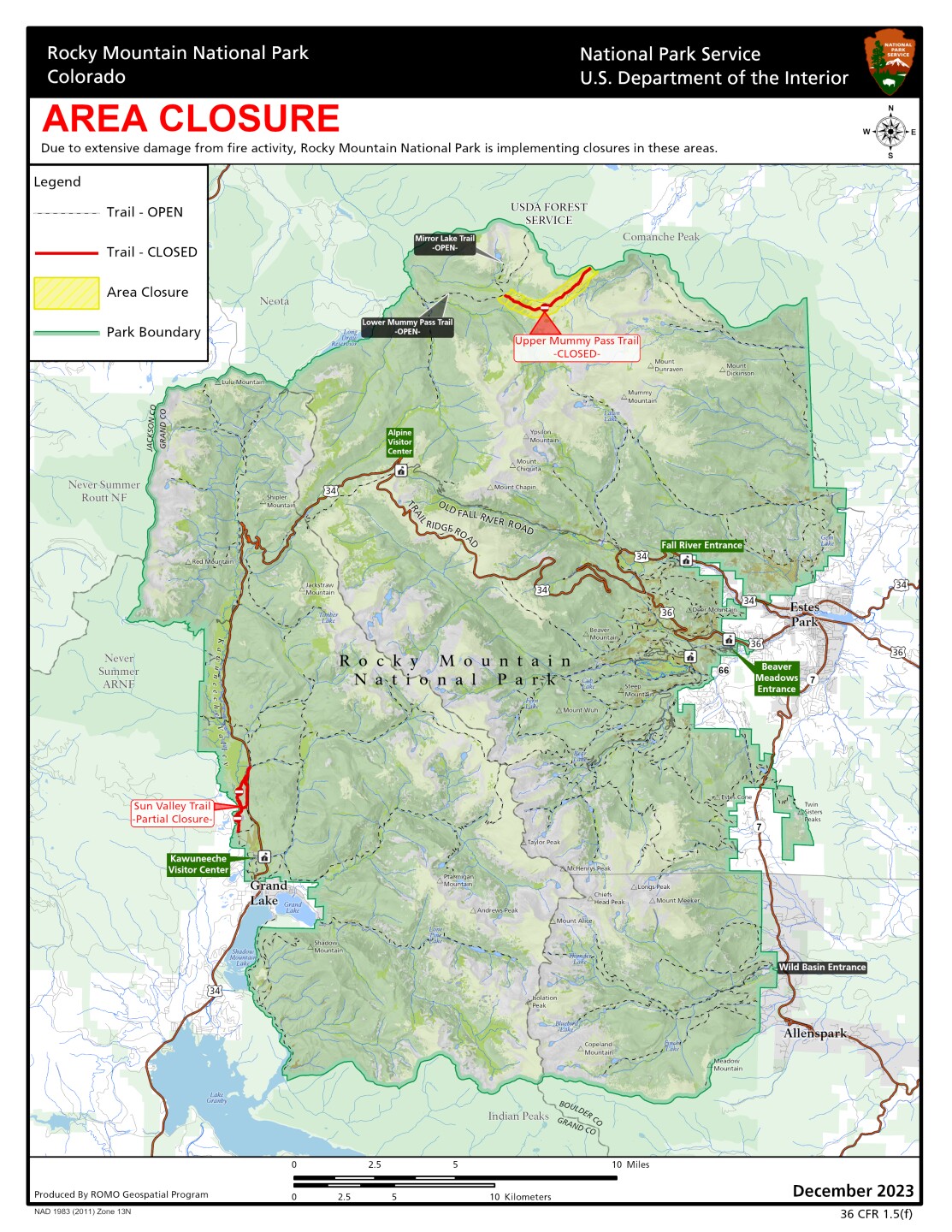
Patterson said while progress has been made, the way the fires changed the landscape can force an emotional reaction.
"Sometimes, people might have a memory of what that area looked like before the fire, and that it's all destroyed and damaged," she said. "And so when you see a forest that is completely changed as a result of very high winds, extreme fire coming through, it's really hard to see that when you know it's never going to look the same as it did. And maybe it shouldn't look the same as it did — a bit healthier in the end."
As people worked to rebuild, so did Mother Nature — on her own timeline. With the benefit of a few years' worth of time and space, people have begun to see the benefits of the fires in the national park.
RMNP's serotinous cones, which rely on fire and heat to grow, thrived. Wildflowers shot out of the ground and added bursts of color to forests of blackened tree trunks.
"Vegetation like that, that's exactly what they needed," Patterson said. "That's a hard thing to swallow when there's so many human impacts that happen as a result of those fires."
The burn scars of the Fern Lake Fire and East Troublesome Fire may also slow future fires from progressing, she said.

"You can think about that for years down the line, but when you're in it — in 2020 — that's not what you're thinking of," she acknowledged. "You're worried about what's going to happen and the impacts to life and health and safety. But it gives now people an opportunity to hike in these areas, or recreate in these areas, or snowshoe in these areas, and really see what a fire coming through an area does."
In the springs and summers of the past few years, the burn scars have yielded a superbloom of flowers and vegetation, she said.
She said anybody headed to adventure in a burn scar should stay aware of possible additional hazards in these areas:
- Burned-out stump holes where the ground may be weak and unstable
- Unstable dead trees, especially in windy conditions
- Loose rocks, logs and rolling debris
- Flash flooding and significant debris flow possible in burn areas
- Dry, hot conditions with little forest canopy to provide shade
History of wildfires in Rocky Mountain National Park
Before the massive 2020 wildfires, blazes in RMNP were significantly smaller.
The National Park Service used GIS data to map out historic wildfires within the park's boundaries, with some entries going back as far as the 1300s.

The Bear Lake Fire of 1900 started after a group of picnickers near Bear Lake built a campfire to make some coffee.
While they tried to extinguish the fire before leaving, a log continued to smolder. As winds picked up, the log's flame returned and the fire spread to nearby vegetation.
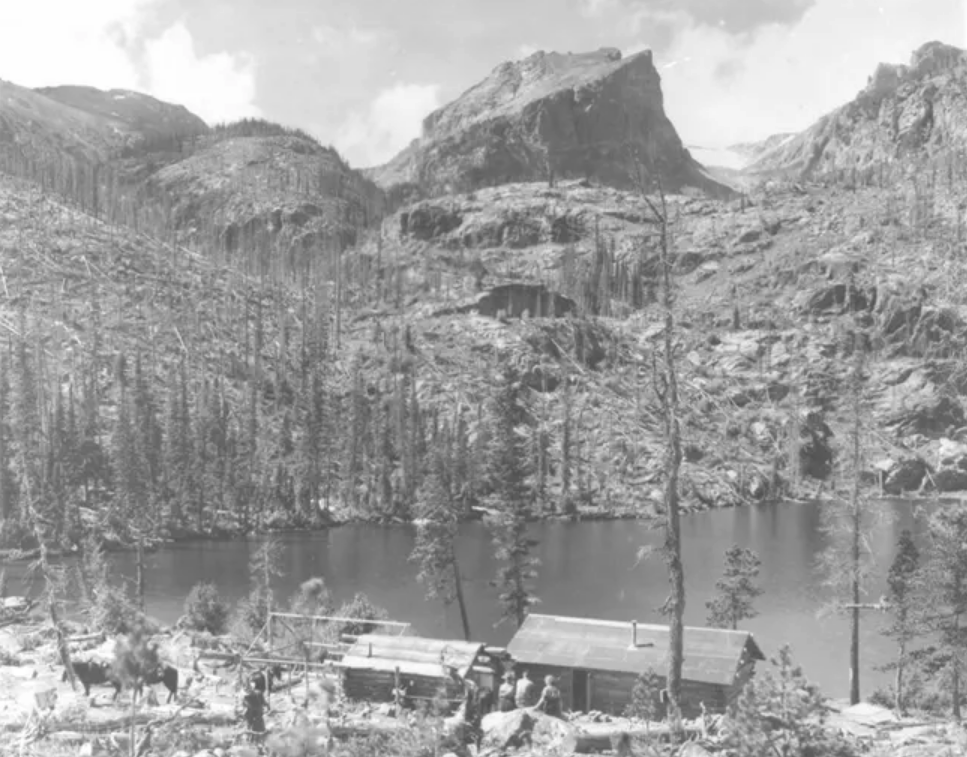
This fire, sometimes referred to as the Big Fire, was officially called the Bear Lake Fire. It burned for two months, completely consuming the popular Bear Lake area.
In 1978, a lightning strike in the park's Wild Basin area ignited a wildfire on Aug. 9. This fire, called the Ouzel Fire, was one of the first examples of wildland fire use in the park, as crews carefully allowed it to burn — a new philosophy recognizing the benefits of fire. For the first several days, the fire behaved as they expected, but strong winds in late August and early September caused it to spread, triggering park managers to begin suppression efforts to protect the public.
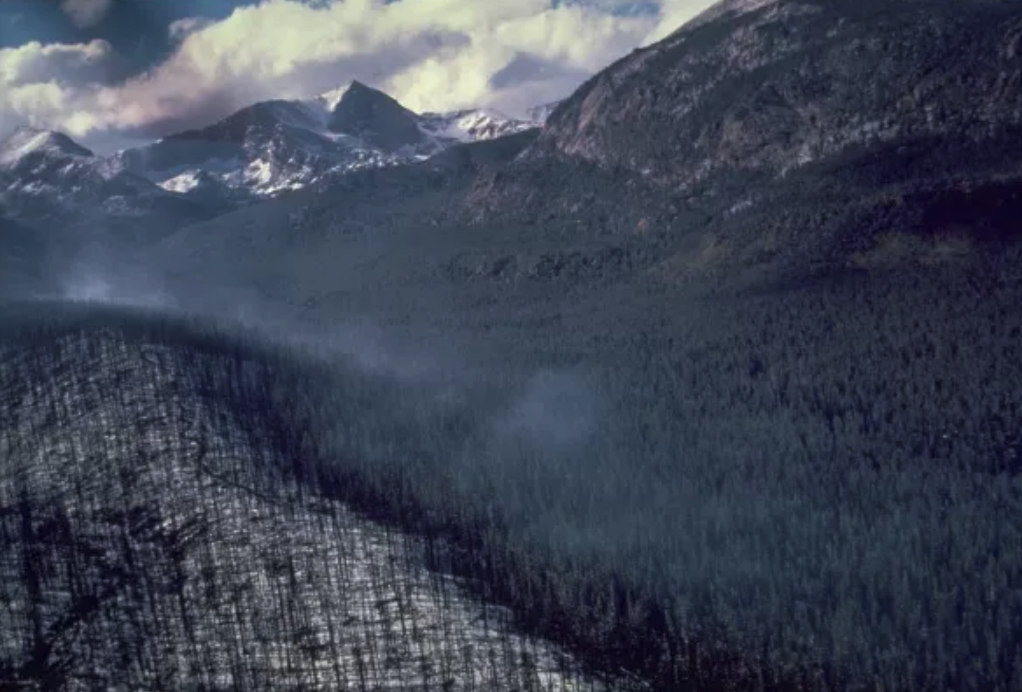
On Sept. 11, 1978, with the help of a dousing of rain and snow, the fire seemed fully contained. However, that was not the end of the Ouzel Fire, which roared back to life on Sept. 15 thanks to 30 mph winds, and the flames continued marching east toward Allenspark. Ultimately, the fire was fully contained once more — at 1,050-acres — within the boundaries of the park.
Several decades later, an illegal campfire set on Oct. 9, 2012 ended up starting the Fern Lake Fire in Forest Canyon. The campfire likely originated above the Pool along the Big Thompson River. Because of the terrain, wind and beetle-kill trees in the area, firefighters were limited in how, when and where they could attack the flames on foot. For two months — into winter — they worked to contain the fire.

"Due to climatic factors and inaccessibility, Forest Canyon had not experienced a fire for at least 800 years before the Fern Lake Fire," the park said. "A long-term drought had left fuels tinder-dry and, in some areas, the layer of dead and down exceeded twenty-foot depths."
On the evening of Nov. 30, 2012, parts of the community were evacuated after strong winds pushed the Fern Lake Fire more than three miles in 35 minutes. Firefighters were able to keep the fire within the park's boundaries. It was fully contained at 3,500 acres that December.

Digital Originals
Rocky Mountain National Park turns 109: A timeline of notable events and figures






